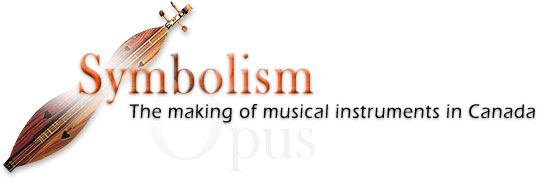|
|
 |
 his
superb banjo is inlaid with mother-of-pearl on the neck and has a
gold-plated metal resonator, which produces a striking visual effect. his
superb banjo is inlaid with mother-of-pearl on the neck and has a
gold-plated metal resonator, which produces a striking visual effect.
| |

Banjo
By
George Kindness
Toronto, Ontario
1933
Wood, gold-plated metal, mother-of-pearl
Overall length: 85 cm;
diameter of body: 34.5 cm;
sides: 62 cm
Gift of Phyllis Kindness
|
It has only four strings; the melody string, usually attached to a peg
on the side of the neck, is absent.
George Kindness
Born in 1888, George Kindness learned the luthier's craft in his native
Edinburgh. After settling in Canada in 1911, he worked for the large Toronto
workshop of R.S. William & Sons, where he made numerous violins. He owned
his own workshop in Toronto from 1921 to 1931 and then worked as a cabinetmaker
for the Robert Simpson Company for fifteen years, while continuing to make
violins and other stringed instruments. In 1946, with the help of his son
Robert, he again opened his own workshop. George Kindness built approximately
150 violins, many of which are played by professional musicians. |




